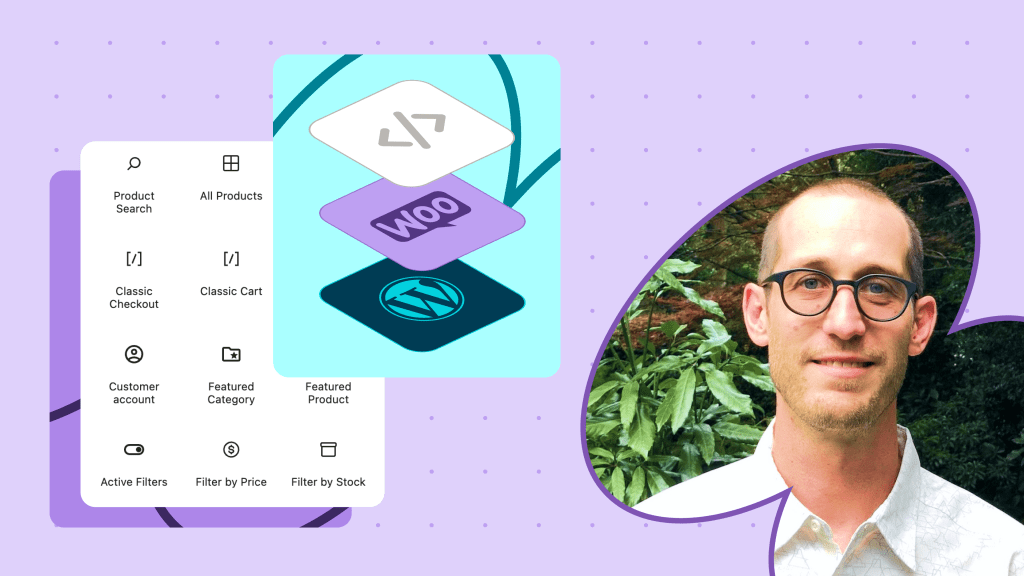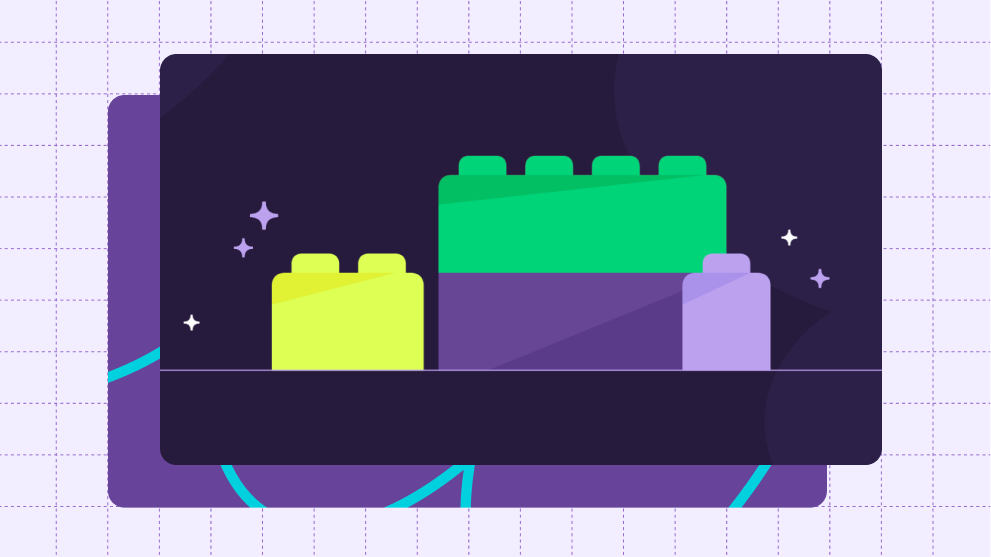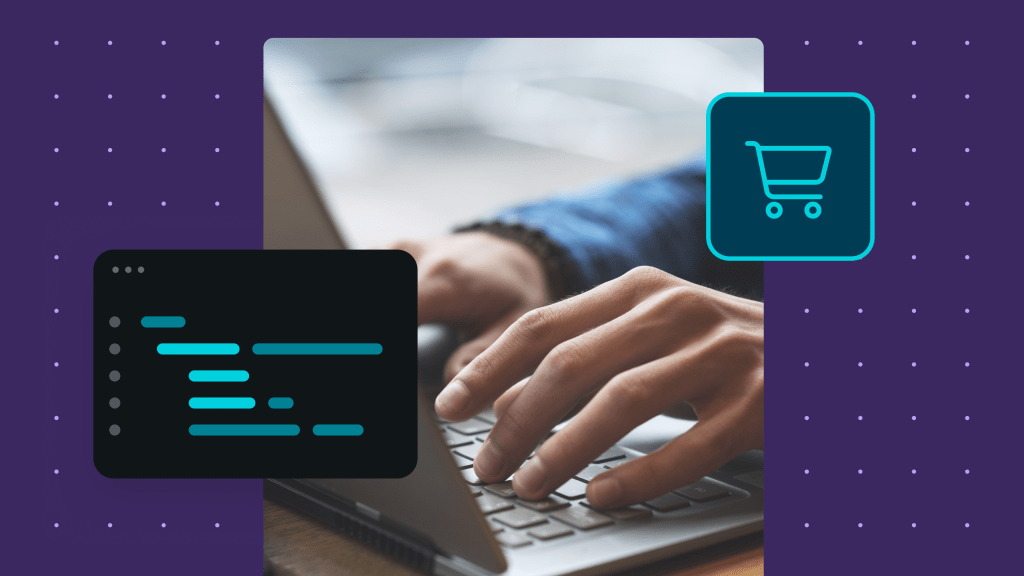
Welcome to a special edition post, brought to you by Beau Lebens, Head of Engineering for Woo.
Today, I’d like to share some insight into our plans for WooCommerce, Woo’s core product, over the course of the rest of the year and beyond.
In this post, I’ll outline our priorities for the coming year, highlighting our commitment to invest in the core platform, as well as enhancing the developer experience, deepening our engagement with the developer community, and leveraging the open-source ethos to drive continuous improvement and innovation.
Big things are in store for our developer community, including a revamped developer blog, improvements to documentation, and a developer-focused newsletter. We’ll also cover major updates to core WooCommerce, including REST API, extensibility, Blocks, accessibility, product editing, and store customization, as well as improvements to onboarding, analytics, and the checkout experience.
Whether you’re a seasoned contributor to the project, a newcomer to the WooCommerce ecosystem, or simply passionate about software development or commerce, this post aims to bring you closer to our roadmap and invite you to join us in building a better WooCommerce together.
Open source at the root of our vision
WordPress is the open-source software that powers over 43% of the internet (W3Techs). WooCommerce is built to be a deeply-integrated, native commerce solution for WordPress, giving us unparalleled reach and flexibility, as well as a vast ecosystem of users, developers, and solutions. For Woo, embracing open-source means fostering flexibility, configurability, and customization, allowing you to tailor nearly every facet of the merchant and shopper experience. From adjusting business models to selecting payment processors and shipping carriers, the open-source nature of WooCommerce supports extensive customization while providing high-quality default experiences. We build WooCommerce to feel like a natural extension of WordPress, leveraging everything it has to offer, bringing content and commerce together like no other solution.
I’ve been immersed professionally in web technology for about 25 years, and have seen firsthand the transformative power of open-source communities and software in shaping the digital world we all inhabit. In the coming year, we plan to deepen this commitment by incorporating more essential commerce functionality into our core offering.
Enhancing the developer experience

Developers play a pivotal role in the Woo ecosystem, and in providing a great commerce experience to merchants. Through a series of targeted improvements, we aim to make it easier for you to create, innovate, and excel with WooCommerce.
Launching the developer newsletter
We’ve introduced a dedicated developer newsletter to keep you updated with all the latest on WooCommerce. This platform, crafted by developers for developers, will offer early insights into new features, practical tips, and previews of our roadmap. It serves as a direct line to stay informed, engage in discussions, and collectively shape the future of WooCommerce.
Upgrading our blog and documentation
We’re upgrading the Woo developer blog and documentation to make it easier for you to find what you need, when you need it. Expect improved navigation that helps you quickly access the most relevant information, and documentation that’s continuously updated to reflect the latest in product developments and industry best practices. We’re also introducing new collaborative features, allowing developers to contribute their insights and learn from the community, making our resources more useful and accessible.
We know that documentation is the foundation of a great experience for developers, so we’re working to significantly improve our docs across the board. This includes comprehensive guides on new and existing features, best practices, and step-by-step tutorials. Our goal is to fill crucial knowledge gaps in areas such as extensibility, block development, and theme customization, empowering developers to start and thrive on our platform.
Enhancing the WooCommerce REST API
We’re focusing on vital improvements and fixes to the current REST API v3, ensuring all changes are backward-compatible. Our goal is to reduce the backlog of issues and feature requests, streamlining API performance without disruption. Alongside this, we’re upgrading API documentation, error handling, and debugging capabilities to better support anyone creating integrations.
Extensibility
For WooCommerce, extensibility isn’t just a feature — it’s a core philosophy that shapes how we build and roll out new features and experiences. By designing features that can be extended and adapted, we enable developers to tailor our platform to fit the specific needs of merchants. This approach ensures that as we develop new core experiences, they can evolve through community innovation to become more versatile and powerful.
As we make new features the default experience, we are working to create space for collaboration with our developer community in order to refine these features, incorporate feedback, and gradually move towards full adoption. In the past year, we have begun using GitHub Discussions, Developer Office Hours, and other sources of feedback to shape and prioritize extensibility points in particular. This iterative process not only enhances the platform but also strengthens the ecosystem, making WooCommerce a more robust solution for everyone.
Our future is block-based

We’re building with the future in mind. Starting late last year, the default user experience with WooCommerce became primarily block-based, and all new feature development is targeting this environment. By shifting control from raw code to a block-based model, WooCommerce is opening up a world of flexibility and customization previously inaccessible to non-coders. This is a tectonic shift that we’re working closely with the WordPress project and team to usher in.
This transition to a fully block-centric ecosystem is not just about enhancing user experience; it’s about paving the way for future innovations in ecommerce. While maintaining compatibility with older methods, the focus is clearly on a future where block-based experiences dominate, marking a significant shift towards a more intuitive and adaptable ecommerce platform.
To continue to evolve, to stay aligned with WordPress, and to compete in the commerce and CMS landscape, we need the community to start moving towards this block-based future. If your solutions are still relying on shortcodes or other legacy APIs, it’s time to embrace blocks and modernize your approach.
We are actively adding resources to the Developer Docs site as well as here on the developer blog, including deep dives on blocks-related topics like our Getting to Know Woo: A Series on the Cart and Checkout Blocks, and video tutorials to help you with the transition.
Building the definitive commerce solution for WordPress

We are investing in improving the store experience, providing a better day-to-day experience for merchants, and a better foundation for developers to customize. At the same time, we’re adding capabilities and extensibility options to enable new possibilities for developers. Understanding upcoming features and enhancements for merchants and shoppers is essential when building those enriching solutions, which ultimately attract and serve merchants from various industries and with different needs.
Subsequently, the shopping experiences that WooCommerce stores provide are really where the rubber meets the road. While we aim to give merchants full control over their storefront and checkout experience, we deliver an out-of-the box default that’s a world-class starting point.
Here are some highlights of where we are concentrating our efforts right now.
Store experience
Streamlined onboarding: We began simplifying the onboarding flow for new stores last July and saw a ~60% increase in completion rates for users who started the profiler. We’ll continue to streamline the setup journey from the very beginning, ensuring that new users can quickly and efficiently set up their stores. We’ll also look at optimized flows for users creating Woo stores on behalf of others.
Modern store customization: As we look to the future of store customization, we’re excited to further integrate with WordPress’s site customization tools. We heavily leverage WordPress’ emerging drag-and-drop site editing capabilities to handle everything from on-brand font and color selections, to complex store layouts, to dialed-in product sliders and collections — all built on the blocks system. While we’re ensuring compatibility with all block-based themes in the WordPress ecosystem, we’re also exploring what it would look like to provide our own fully block-based, commerce-optimized theme out of the box.
Flexible product management: Our new product editor is not only faster and more intuitive, but it is also nearing feature completion. We are now heavily focused on extensibility and customization. This approach is about rounding out the experience for developers, enabling them to fully leverage and integrate the editor into their solutions. We’re on a path to making this the default experience, contingent on deeper integration with WordPress Core work and widespread adoption and integration by developers.
Optimized order management and fulfillment: We are improving order management, but before embarking on any kind of major redesign, we’re stepping into some more targeted and heavily requested improvements. Right now, we’re working with friends at Kestrel and Mindsize to improve order statuses for managing the various states an order can be in, including handling multiple payment options for orders and various fulfillment scenarios.
Revamping merchant analytics: We’ve recently kicked off an effort to completely rethink how we help merchants understand what’s happening in their store, what’s working, and what they could do to make their business more successful. To this end, we will be improving the basic analytics function available to all merchants, including working with developers to finally retire the legacy “Reports” section, which has been officially deprecated for years.
Accessible stores: We are investing in enhancing the platform’s accessibility, ensuring it is available to the broadest audience possible. We are focusing first on improving shopper-facing accessibility, and then will shift to admin functionality. Our partners at 10up are supporting us here, and we’re preparing for an external accessibility audit to guide future priorities.
Shopper experience
An unbeatable checkout: Our block-based checkout is continuing to evolve and only gets better. We’re reducing cart abandonment, boosting mobile conversions, and simplifying user interactions. We’re really emphasizing performance here, so we’re reducing bundle sizes, improving load times, and optimizing for rapid user input. This new checkout sees conversions up to a few percentage points higher than the classic one, and we have ambitious goals to see a 25% improvement in block-based checkout conversion compared to short-code by the end of the year.
Local pickup options are being combined and simplified, and options around shopper account creation have been tightened up. We’ve added the number one developer-requested feature: an additional fields API that allows developers to add custom fields to the checkout process to support more complex needs.
These cart and checkout features are all part of the default experience on new stores right now, so we strongly recommend you get to know the Cart and Checkout blocks and pursue compatibility now with your own integrations.
Elegant order confirmation: This feature is already heavily customizable, but we’re enhancing the default to integrate better shipping details and order summary info, while also providing the option for shoppers to create an account after paying for their order. This is all part of reducing friction, increasing conversions, and avoiding cart abandonment.
For more detailed information on features and WooCommerce releases, follow our Changelog.
Building the future together

As we wrap up this exploration of WooCommerce’s roadmap and the exciting opportunities ahead, we want to extend our thanks to the collective efforts of developers, merchants, and the wider WooCommerce community. By embracing open-source principles and fostering a culture of collaboration, we’re not just building a platform — we’re creating a movement that empowers individuals and businesses alike to thrive in the digital age.
If you are reading this, you are part of the journey. I encourage you to make your voice heard by joining GitHub Discussions to share ideas, ask questions, and provide feedback on the platform’s evolution. Engage with us and the rest of the community on the Community Slack, where you can connect with other developers, join office hours, and stay updated on the latest news. Contribute to WooCommerce core code or enhance the documentation to help improve WooCommerce for everyone. Let’s continue to create, innovate, and excel together.
You can connect with me directly on https://x.com/beaulebens, or follow along with the Woo Developer Experience team at https://x.com/DevelopWoo.
Leave a Reply